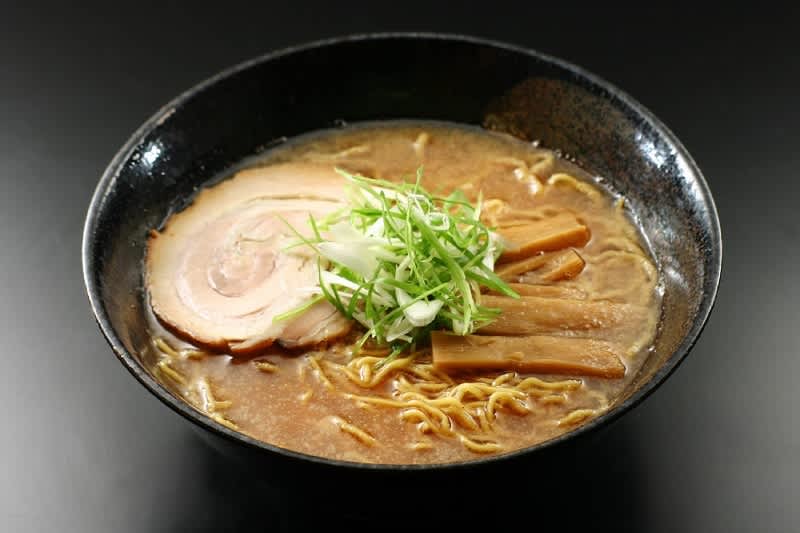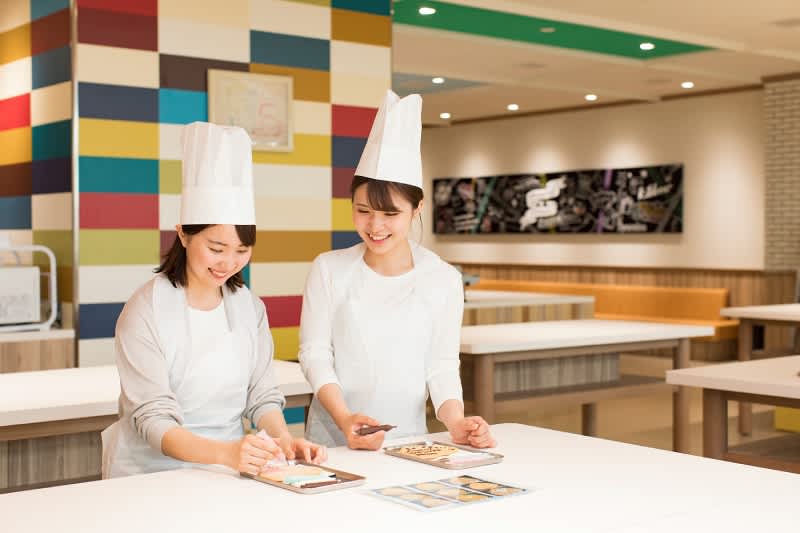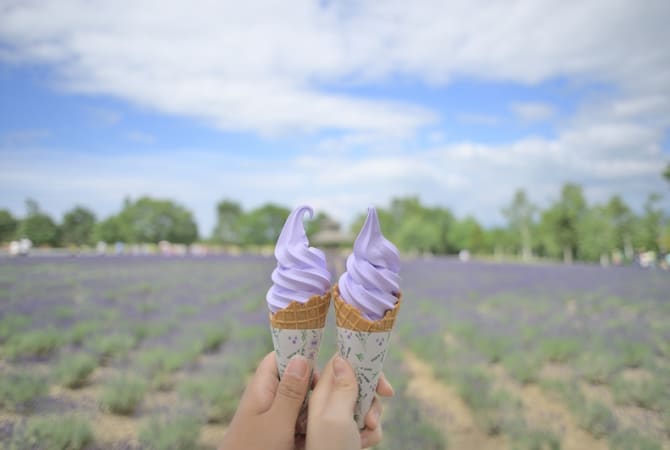Exploring the Beauty of Hokkaido in 3 Days: Nature Adventures, Historic Spots, and Other Things To Do
The imagery of a snowy countryside might be one of the first things that come to mind at the mention of Hokkaido. However, the picture-perfect wintry sights are just one thing to look forward to when visiting Japan’s northernmost prefecture. The place is also teeming with abundant natural wonders, cultural gems, and other exciting attractions. As captivating as its winter scapes are, this island – the country’s second largest – is home to some of Japan’s oldest natural parks, historic and picturesque spots, and festivals that celebrate the singular beauty of the region.

If you’re looking to discover the beauty of Hokkaido, check out this three-day itinerary we’ve put together that will leave a lasting imprint on your wandering traveler's mind.
Day 1: Immerse yourself in an exciting adventure by exploring the city of Asahikawa
Dedicate your first day to a cultural immersion by exploring Asahikawa, located just two hours away from Sapporo. You can taste sake at Otokoyama Sake Park and savor a flavourful bowl of Asahikawa ramen for a meal. Then, visit and meet the lovable animals at Asahiyama Zoo. Finally, for those visiting in February, cap your day off by taking a side trip to watch the magnificent Asahikawa Winter Festival.
A. Get a taste of Japan’s traditional beverage ‘sake’ at the Otokoyama Sake Park

Otokoyama Sake Park, also known as Otokoyama Sake Brewery, was founded during the Edo period (Kanbun era, 1661-1673). The sake park features a circular path resembling an “ochoko” (sake cup) and a tilted, 12-meter-long sake bottle that serves as a slide. Hokkaido’s sake differs from other sakes in Japan as it’s often made from “junmai” (pure rice), which boasts a light, dry, and refreshing taste. Meanwhile, Otokoyama’s sakes are made entirely using the spring water from the Daisetsuzan mountain range.
Even though it’s a sake facility, the park also offers play areas for children to enjoy, such as sake tanks where they can play hide-and-seek, and a pond with carp that visitors can feed during the warmer months. The Sake Brewery Museum, on the other hand, exhibits valuable sake brewing materials and tools from the Edo period. The sake tasting, kids' play area, and the cafe that offers refreshments like coffee, tea, and shaved ice are located within the newly established shop area.

Photo Credit: Asahikawa City
After a morning of cultural pilgrimage, treat yourself to a mouth-watering bowl of Asahikawa ramen at Asahikawa Ramen Village. Eight popular shops that serve Hokkaido’s famous dish can be found in the area. Renowned for its double broth, this ramen combines a seafood soup with a flavorful blend of vegetables, pork, and chicken. The resulting blend is then rounded off with soy sauce. The dish can include fatty pork as is typical in Asahikawa, or traditional ramen toppings like chashu and bamboo shoots.
Otokoyama Sake Park (Website)
Address: 7-1-33, Nagayama 2-jo, Asahikawa City, Hokkaido 079-8412
Access: From Sapporo, take the Limited Express Lilac or Kamui to Asahikawa Station. From there, take a 20-minute bus ride to Nagayama 2-Jo 6-chome bus stop. The park is a two-minute walk from the bus stop.
Operating Hours:
- Monday to Sunday: 9:00 a.m. to 5:00 p.m.
- Closed days: New Year’s Holidays: December 31, January 1-3
*Note: The sake-tasting area and cafe are open only until 4:30 p.m.
B. Treat yourself to a dopamine boost by meeting the cheerful animals of Asahiyama Zoo

Perhaps the most popular attraction in Asahikawa is Asahiyama Zoo, where visitors can observe animals from various angles thanks to its uniquely designed enclosures.
For example, enclosures for wolves and polar bears have glass domes within them from which guests can observe the animals up close. The penguin pool, meanwhile, has a tunnel across it where people can observe their activities underwater. One of the zoo’s highlights is the famous “penguin walk”, in which the animals waddle down a designated course throughout the zoo during snow season.
Another crowd-pleaser is the Giant Seal Pavillion, which allows visitors to observe the seals swimming and playfully interacting with their companions underwater through a glass tube with a 360-degree view. Other animals that can be found living in the zoological garden include Ezo deer, Japanese cranes, Ezo brown bears, red pandas, Amur leopards, and scop owls. Meanwhile, among the animal species from other places in the world that are now part of the Asahiyama Zoo are apes, giraffes, and big cats.

If you’re visiting in early February, make the most of your trip by participating in the Asahikawa Winter Festival - one of the largest events in northern Hokkaido - held at the beginning of February at Heiwa Street Shopping Park and the Asahibashi riverside. Magnificent snow statues are built and displayed at the venues during the festival, made more fun with lighting, music, and more. The sky is also filled with colorful fireworks on some dates during the 6-day celebration.
Asahiyama Zoo (Website)
Address: Kuranuma, Higashiasahikawa-cho, Asahikawa City, Hokkaido 078-8205
Access: From JR Asahikawa Station, take a 40-minute bus ride via bus numbers 41, 42, and 47.
Operating Hours (For 2025):
- January 2 to April 7: 10:30 a.m. to 3:30 p.m. (Last entry at 3:00 p.m.)
- April 26 to October 15: 9:30 a.m. to 5:15 p.m. (Last entry at 4:00 p.m.)
- October 16 to November 3: 9:30 a.m. to 4:30 p.m. (Last entry at 4:00 p.m.)
- November 11 to December 29: 10:30 a.m. to 3:30 p.m. (Last entry at 3:00 p.m.)
* Note: for the special opening hours, please refer to this site.
Day 2: Explore the wonders of Biei and Furano’s natural beauty
The second day of your Hokkaido trip is dedicated to nature, with stops in the picturesque Biei and Furano.
A. Be in awe of the magical view of Shirogane Blue Pond

The beauty of Shirogane Blue Pond, a magnificent body of water in the town of Biei in Kamikawa District, is an unintended byproduct of an initiative to protect the area from environmental damage. Created in 1989, the pond is meant to mitigate possible destruction caused by mudflow from the nearby Mt. Tokachi, an active volcano.
The pond's blue color comes from natural colloidal aluminum hydroxide in the water from Shirahige Falls. Its hue also shifts with the seasons, adding a magnificent charm to its beauty. During winter, due to snow piling up in the pond, the blue surface is not visible. Thus, the spot is lit up from October to April during sunset to showcase its charm even when covered in snow. The larch and silver birch trees also contribute to the picturesque view.
Located just near the pond, Shirogane Onsen offers a tranquil escape for visitors seeking a relaxing soak. Legend has it that bathers at this onsen experienced such significant relief from ailments that they no longer needed their canes, leading to its unique moniker, ‘‘onsen without using a walking stick.” The onsen contains minerals such as sodium, calcium, magnesium, sulfate, and chloride that are good for neuralgia, muscle pain, joint pain, frozen shoulder, motor paralysis, and chronic skin diseases.
Shirogane Blue Pond (Website)
Address: Shirogane, Biei, Kamikawa District, Hokkaido 071-0235
Access: From Sapporo, take the Limited Express Lilac or Kamui to Asahikawa Station. Then, transfer to the JR Furano Line to JR Biei Station. From there, the pond is about a 30-minute trip via the Dohoku Bus. Alight at Shirogane Blue Pond bus stop, and walk for 8 minutes to reach the spot.
*Note: Operating hours vary per month, visit this site to know more.
B. Take a photo of the majestic landscape of Shirahige Falls

The source of the natural colloidal aluminum hydroxide that creates Shirogane Blue Pond’s striking hue is a sight to behold: the majestic Shirahige Falls. Its name means “white beard waterfall,” and is said to originate from the groundwater that seeped out of the rocks and flowed 30 meters down – a rarity for a waterfall in Japan – and pours out through the spaces on the side of the mountain, giving it a veil-like appearance.
Depending on the season, the waterfalls undergo an enchanting transformation, uncovering its natural beauty along with each season, a sight to see for visitors and locals alike. Just like the Blue Pond, the falls are also lit up during the winter season.

Another must-see attraction in the area is the “Lonely Christmas Tree”, an 8-meter spruce tree with its tip looking like a star based on theories. A stunning scenery can be seen here during winter, as the tree in the middle of the field is surrounded by pure white snow. Visitors can gaze at the beauty of it from a distance as a private entity owns the field.
Shirahige Falls (Website)
Address: Shirogane, Biei-cho, Kamikawa District, Hokkaido 071-0235
Access: From JR Biei Station, take a 30-minute bus ride via the Dohoku Bus and alight at Biei Shirokane Onsen bus stop. From there, the waterfall is about 3 minutes on foot.
*Note: Operating hours vary per month, please visit this site to know more.
C. Shop for arts and crafts at Ningle Terrace and dine at the cafe inside the wooden house

Ningle Terrace, adjacent to the Shin Furano Prince Hotel in Furano, is a quaint cluster of log houses in the forest. The cabins serve as stores where artisans sell their arts and crafts to visitors. A cafe called Coffee House Chu Chu No Ie can also be found in the area, where guests can stop by and grab some muffins, ice cream, hot and cold drinks, and other refreshments.
During winter, the area brings a breathtaking layer of soft, white snow that blankets the walkways and crowns the cottages with snow-covered roofs. A different experience awaits visitors at night, as the walkways and houses are filled and lined with stunning fairy lights. Nature lovers will surely enjoy strolling around this place while shopping for souvenirs with a touch of nature and Furano.
Ningle Terrace (Website)
Address: Shin Furano Prince Hotel, Nakagoryo, Furan City, Hokkaido 076-8511
Access: From JR Furano Station, ride the Furano Bus and alight at Shin Furano Prince Hotel. From there, the shopping area is just a 2-minute walk.
Operating Hours:
- Summer (July to August): 10:00 a.m. to 8:45 p.m
- Winter: 12:00 p.m. to 8:45 p.m.
*Note: The coffee house is open for a limited period. Visit this site to know more.
Day 3: Discover the picturesque spots in Sapporo and Otaru
Spend your last day in Hokkaido by checking out the man-made wonders in Sapporo and Otaru.
A. Take a relaxing time at Odori Park and snap photos of its massive snow statues during winter

Odori Park, located in the center of Sapporo, is an iconic landmark in Hokkaido’s capital as it divides the city into its north and south. It extends 1.5 kilometers from east to west, parallel to 12 city blocks. In addition to being a geographic marker as well as providing a tranquil space for park goers, Odori Park also holds a cultural significance, being the main venue for the Sapporo Snow Festival, which is held in early February and boasts massive snow and ice statues.
There are also other great spots in the park where travelers with children can explore, featuring playgrounds and slides for kids and kids at heart to enjoy.
Adding to the must-visit spot in the area is the Sapporo TV Tower, which stands at 147.2 meters on the eastern end of the park. It has an observation deck at the 90-meter mark, from which visitors can marvel at the beauty of the park and parts of the city. The tower is made radiant at night with lights from top to bottom. Other popular attractions near the park where visitors can pose for a photo include the Clock Tower and the Akarenga (formerly known as the Hokkaido Government Building).
Odori Park (Website)
Address: 1-12 Chome, Odorinishi, Chuo Ward, Sapporo City, Hokkaido 060-0042
Access: From JR Sapporo Station, ride the Namboku Line and alight at Odori Station. From there, take a few minutes walk to reach the park.
Operating Hours: Monday to Sunday: Open 24 hours
B. Satisfy your sweet tooth, try your hand at cookie-making, and pose for a photo in Shiroi Koibito Park

Shiroi Koibito Park, a theme park in Sapporo, is notable because it is named after one of Hokkaido’s most popular edible souvenirs, the Shiroi Koibito cookies. The park is owned by Ishiya, the maker of the much-loved product.

Exhibits about the history of chocolate and how the Shiroi Koibito cookies came to be, as well as viewing of the confectionery company’s production process, can be seen inside the factory. Visitors can also try their hand at cookie-making at various workshops. For those with a sweet tooth, the park’s Chocolate Lounge Oxford offers a variety of cakes, parfaits, and chocolate drinks where you can have your fill of desserts.
Guests can also take their sweet time exploring the park’s garden and posing for a photo. For those visiting with their kids, a few spots where children can enjoy include Gulliver Town POKKE, Amusement Arcade Notting Hill, and Chocotopia Factory.
Aside from taking home the famous Shiroi Koibito cookies, visitors can also dine and shop for other souvenirs from the cafes and stores inside such as the Cafe BUTLERS WHARF, Trial Place COVENT, Bakeshop CHELSEA, Shop PICCADILLY, and Photo Shop MEMENTO.
Shiroi Koibito Park (Website)
Address: 2-11-36 Miyanosawa 2-jo, Nishi Ward, Sapporo City, Hokkaido 063-0052.
Access: From JR Sapporo Station, ride the Nanboku Line to Odori Station then change to Tozai Line to reach Miyanosawa Station. From there, take a seven-minute walk to reach the park.
Operating Hours:
- Monday to Sunday (December 18 until March 31): 10:00 a.m. to 7:00 p.m.
- Normal Operating Hours: 10:00 a.m. to 6:00 p.m. (The last admission for paid entry is at 4:30 p.m.)
C. Marvel at the historical landscape of Otaru Canal

Otaru Canal, located in the port city of Otaru and about an hour away from Sapporo, is a picturesque area that was once bustling with trade activity. The canal was created in 1923 to enable small ships to deliver items from larger vessels to warehouses by the body of water. In the 1980s, the warehouses were transformed into restaurants, shops, and museums, preserving the canal's rich history, with traditional gas lamps adding to its charm.
Visitors would not want to miss an evening cruise around the romantic cityscape to see the illuminated architecture and retro gas lamps. The area also boasts several museums and workshops, such as the Otaru Glass Museum and Otaru City Museum of Art, which travelers can also visit to sightsee and learn.
Otaru Canal is also the main venue of Otaru’s Snow Light Path Festival held in mid-February. During the festivities, the wavering lights of candles in the glass floats can be seen floating on the freezing surface of the canal, along with snow candles on the riverside. The handmade snow and ice art objects are also a sight along the “Couples’ Sanctuary” and “Heart Monument” on the Asakusabashi bridge.
Otaru Canal (Website)
Address: Otaru International Information Center 5-3 Minatomachi, Otaru, Hokkaido 047-0007
Access: From JR Otaru Station, take a 13-minute walk to reach the canal.
Operating Hours: Monday to Sunday: Open 24 hours
Once you’ve visited the places on this itinerary, you’ll know just how lovely Hokkaido is!
Discover more of Japan. Follow us on Facebook and Instagram for fun facts and quick tips about Japan.


















































